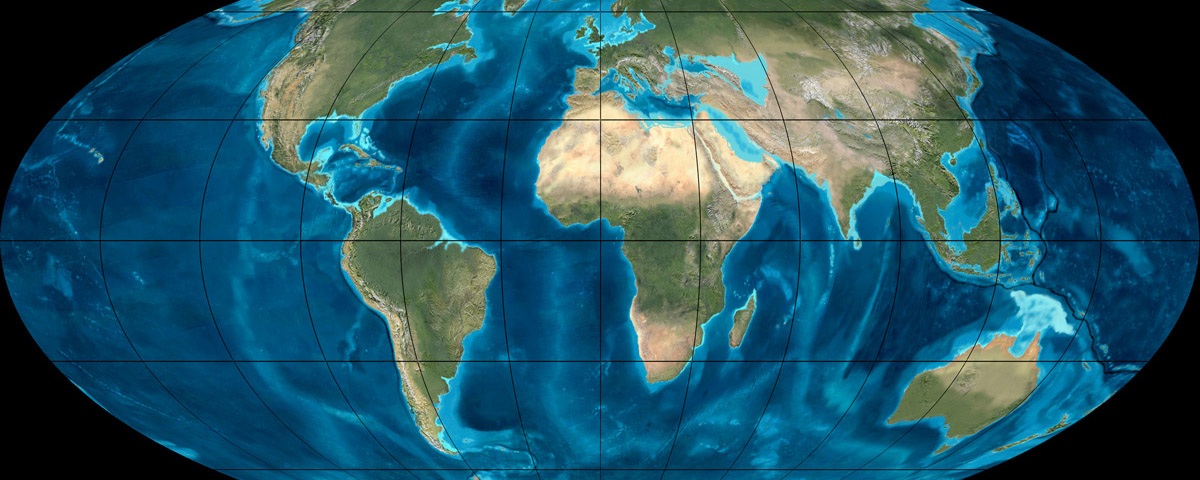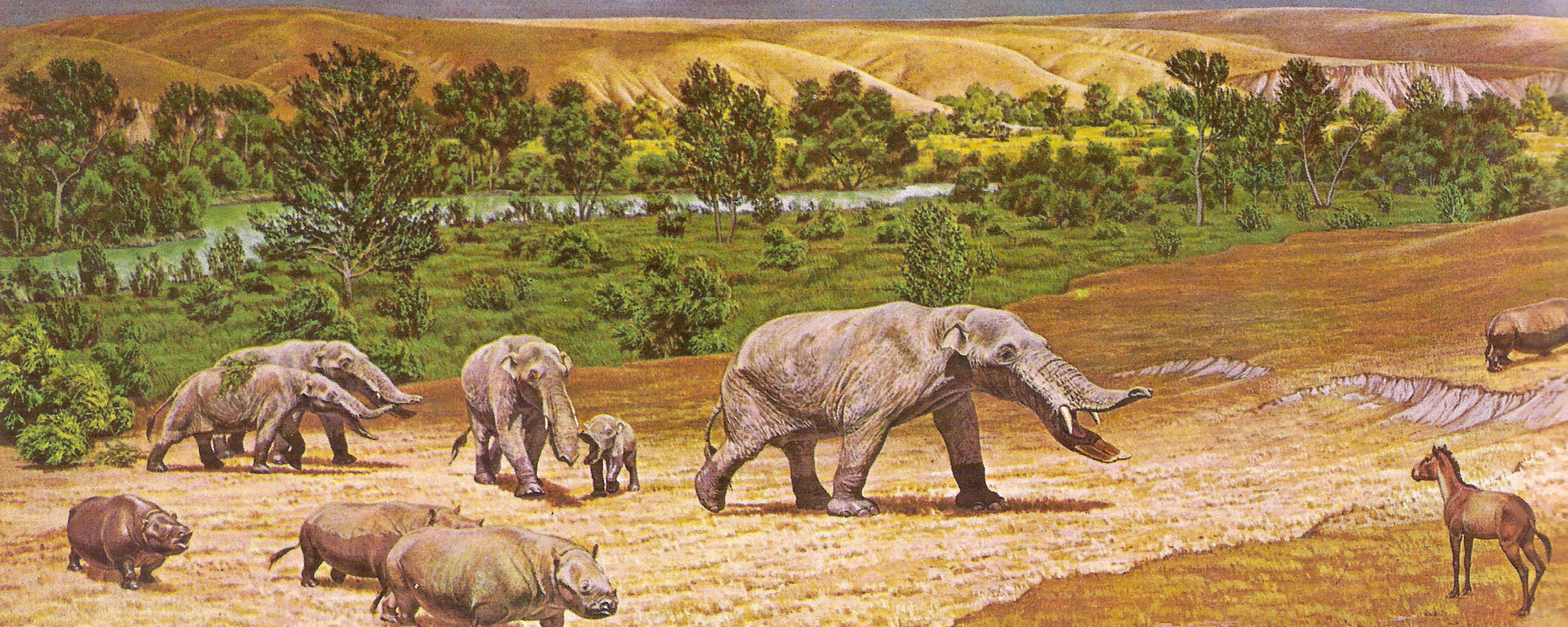


Paleogeography and Geology of the Neogene:
Continued Himalayan Orogeny (especially 20 Ma onward) lifts Himalayan Plateau:
Northward migration of Africa blocks off entrance to greatly reduced western Tethys (aka Mediterranean): Messinian salinity crisis:
Isthmus of Panama forms around 3 Ma: allows direct land-to-land connection between North and South America (see below), and blocks Atlantic-Pacific water interchange. Beginning of deep-sea Oceanic Conveyer Belt, isolating Arctic Ocean and beginning of northern polar ice.
In eastern North America, shallow water deposits including Chesapeake Group (Miocene). Erosion of Appalachian system causes pulses of isostatic uplift (at least three pulses), producing modern Appalachian Mountains out of fold-and-thrust belt.
Western North America has an extremely complex Neogene geological history:
Development of the Antarctic Bottom Water results in a greatly more productive marine realm.
New marine mammal groups:
With the beginnings of the ocean conveyer belt and thermohaline circulation (and thus a greater chilling effect), some major shift in marine ecosystems in terms of diversity:
At beginning of Miocene: origin and radiation of the composits (Compositae, sometimes called the Asteraceae), the family of herbs containing most "garden plants" and weeds (daisies, asters, sunflowers, lettuces, etc., etc.). Generally the first to colonize cleared ground, but do not do well at retaining it. May have diversified as a response to the spread of grasslands (with grasslands comes grass fires, which periodically clear ground).
Between 7 and 6 Ma, the shift from C3 to C4 grasses (use different physiological pathway). C4 grasses have about 5 times the amount of silica in their tissue. Became a selective pressure on grazers.
With spread of grasslands in early Neogene (or late Paleogene in South America) comes shift from browsing to grazing among some groups of ungulates; perhaps also origin of pack hunting among carnivorans. Among smaller animals, also some grassland-related diversifications:
At around 3 Ma, rise of the Isthmus of Panama allows the Great American Biotic Interchange (GABI):
Also around 3 Ma, rise of continental glaciation produces tundra-adapted mammals: wooly mammoths, wooly rhinos, musk oxen, etc. Faunal communities migrate polewards during interglacials, equatorwards during advances
Primates are one branch of the placental mammals. Primates appear during Paleocene.
Primates possess:
Widespread throughout North America, Eurasia, and Africa during early Paleogene; die out in North America but survive elsewhere.
Anthropoids: "higher primates" ("monkeys", "apes", and humans); proportionately larger brains. "Monkeys" are a paraphyletic grade (or more accurately, a paraphyletic grouping of two extant monophyletic clades (one South American, the other Eurasian-African) and various extinct clades). Monkeys move along the tops of branches.
Hominoids: "apes" and humans. Strictly Old World (Eurasian-African) until Pleistocene. Move in trees by swinging underneath branches: developed wide shoulders and wide-ranging arm motions. During Miocene many groups of "apes" throughout Eurasia and Africa. Hominoids known to use simple wooden and stone tools, even today. One Asian branch (pongids) contained Gigantopithecus (largest primate known) and the modern orangutan (Pongo).
In Africa: the hominines: gorillas, chimps, and the human-lineage (homininans).
Rise of the human-lineage (Hominina) by around 7 Ma. Oldest good skeleton from Ardipithecus of the Late Miocene: upright and bipedal, but still with opposable big toe to climb trees. Basal homininans seem to have lived in forest margin.
In the Pliocene, basal homininans replaced by "australopithecines" ("ape-men") like Praeanthropus and Australopithecus. These walked fully upright, although not quite like later early humans. Still fairly low on the food chain.
To Lecture Notes.
